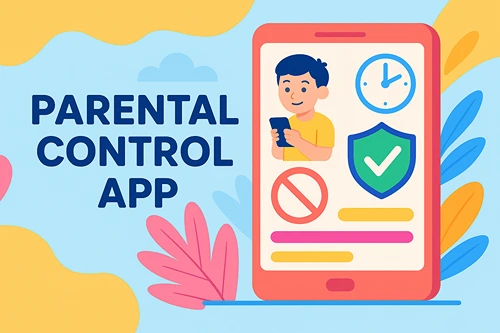Important Safety Signs for Schools
With the new school year less than a month away, parents are preparing to send their children off on a fresh adventure of learning, growth, and new friendships. Kids are undoubtedly excited, but parents can’t help but worry about their safety both on and off campus.
Schools remain among the safest places for children. Teachers are trained for multiple situations, and regular drills equip students with the knowledge of what to do and how to act in case of an emergency.
One important safety element is often overlooked: school safety signs. These visible signs guide students, staff, and visitors during emergencies. Let’s explore the key types that keep everyone safe while they head to class.
Why Schools Need Safety Signs
There’s an old saying that goes something like “schools are a second home to children.” That saying stems from the fact that children spend almost as much time at school as they do at home, if not more on occasion.
Because of this, schools must make students feel just as safe on campus as they do at home. Trained staff are always present, students and faculty regularly participate in emergency drills, and mandatory safety inspections ensure the facilities are free of hazards.
In addition to the training, drills, and inspections, schools also incorporate safety signs that are crucial for anyone on the premises to find their way to a safe location. These signs may also provide instructions on how to face and control a certain situation.
However, having nothing but safety signs hanging from the ceiling or plastered on walls may be overwhelming and instill a feeling that something is bound. This is why safety signs need to be balanced with festive back-to-school signs that welcome students back to campus in a pleasant manner.
Most Important Safety Signs for Schools
When you think of school safety signs, a few familiar types probably come to mind right away. Fire safety signs, fire escape signs, and emergency exit signs are the most common ones. These are some of the most visible and crucial signs that help ensure everyone knows how to respond in urgent situations. However, schools use a wide variety of other safety signs that play equally important roles in keeping students, staff, and visitors protected every day.
From signs that guide behavior to those that warn of hazards or direct people to medical help, each type contributes to a safer and more secure campus environment. Let’s take a closer look at these different categories and understand how they work together to maintain safety at school.
Mandatory Signs
“Mandatory” school safety signs typically focus on actions students, staff, and visitors must take, rather than things they’re prohibited from doing. They communicate requirements in a positive, directive way. Examples include signs found in chemistry labs like “Safety Goggles Must Be Worn,” as well as others such as “Keep Quiet in the Library” or “Keep the Doors Closed.” The messages are clear and straightforward, reminding everyone to follow the rules to maintain safety and avoid issues.
Prohibition Signs
Prohibition signs are the exact opposite of “mandatory” signs in schools. Instead of telling people what they must do, they make it clear what is strictly forbidden on campus. These range from simple messages like “No Smoking” and “No Running” to more serious rules such as “No Firearms Allowed” or “No Alcohol on Campus.” Each sign marks a firm boundary that no one should cross.
Warning Signs
Pedestrian safety is always at the forefront for both parents and school administrators, but it makes up just one component of school warning signs. Warning signs on or near campus alert students, parents, staff, and visitors to potential hazards in the area. They can appear both inside and outside the school. Common examples include “High Voltage” signs near electrical posts, “Children Crossing” signs at the school entrance, and “Wet Floor” signs in hallways. Each is designed to prevent accidents and keep everyone safe in different parts of the school.
Fire Safety Signs
Fire safety signs guide people on how to a) prevent a fire from starting; and b) respond if one occurs. For example, they may warn against striking a match or using a lighter near flammable materials, or provide step-by-step instructions for operating a fire extinguisher or fire hose. Either way, these signs are crucial and can save lives in an emergency.
Fire Exit Signs
These directional signs work alongside the informative ones mentioned earlier. In the event of a fire, it’s essential for everyone to know how to evacuate the school in an orderly way. Fire exit signs are typically placed above doors leading out of the building, but they can also appear inside classrooms as maps showing the nearest exit. You might also find them near elevators, warning people not to use them during a fire.
First Aid Signs
First aid signs in schools are among the most important safety signs. They can be lifesaving, though their effectiveness greatly increases when paired with proper hands-on training. These signs may direct students and staff to the nearest first aid kit or, in critical situations, to a defibrillator. They can also be instructional graphics on how to perform life-saving procedures such as the Heimlich maneuver or CPR. Others guide people to the school’s medical room if someone needs attention from a nurse or other medical professional.
Conclusion
School safety signs might seem like a small detail in the bigger picture of campus security, but they play a vital role in preventing accidents, guiding people during emergencies, and reinforcing important safety rules. From mandatory and prohibition signs to fire exits, first aid points, and hazard warnings, each sign serves a specific purpose in keeping students, staff, and visitors safe.
As the new school year approaches, it’s worth ensuring these signs are visible, clear, and properly placed throughout the campus. Combined with training, drills, and a welcoming atmosphere, they help create a school environment where safety and learning go hand in hand.






